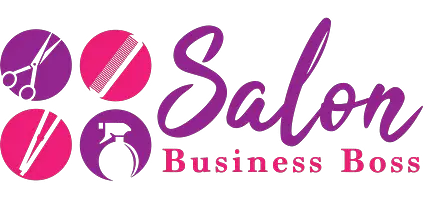Running a successful salon business requires a meticulous understanding of its monthly expenses. While the cost of operating a salon can vary depending on factors such as location, size, and services offered, we will delve into an analysis of the average monthly expenses a salon owner may incur.
It costs $240 to run a salon monthly, covering rent and utilities, salon supplies, staff wages, marketing, insurance, and maintenance. This also covers the training of salon staff and some miscellaneous expenses. Effective financial planning ensures a successful and thriving salon business.
Rent and Utilities
Rent and utilities play a pivotal role in shaping a salon’s monthly expenses. The cost of renting a commercial space can significantly impact the salon’s overall budget and profitability. For a small to medium-sized salon, the average monthly rent can range from $800 to $2,000, depending on various factors such as the salon’s location, size, and amenities offered. Prime locations in bustling city centers may command higher rental fees, while salons in suburban or less crowded areas may be more cost-effective.
Aside from rent, utilities form another essential component of monthly expenses. Electricity, water, and gas are critical for the salon’s day-to-day operations, providing the necessary energy and resources to run salon equipment and maintain a comfortable environment for both staff and clients. These utility costs can vary depending on factors like the salon’s size, the number of employees, and the level of energy consumption. On average, salon utilities can amount to approximately $150 to $300 per month.
Salon owners must carefully consider the balance between location, rent, and utilities to ensure financial stability. By selecting a suitable commercial space and implementing energy-efficient practices, salon operators can manage these expenses effectively, allowing them to allocate resources to other aspects of the business, such as staff training, marketing, and enhancing customer experience.
Salon Equipment and Supplies
Maintaining a professional and well-equipped salon is crucial for attracting clients and providing top-notch services. Salon owners must allocate a budget for high-quality salon equipment and supplies to meet the needs of their clientele. The expenses in this category can vary depending on the range of services offered and the salon’s size and specialty.
A significant portion of the budget typically goes towards purchasing and replenishing essential salon supplies. These include a variety of haircare products like shampoos, conditioners, styling gels, hairsprays, and color treatments. Additionally, the cost of disposable items such as towels, capes, and aprons also factors into the budget.
Salon owners must strike a balance between quality and cost-effectiveness when purchasing supplies. Opting for reputable brands ensures client satisfaction and fosters customer loyalty, but it may also increase expenses. To optimize expenses, owners can consider buying supplies in bulk, which often leads to cost savings.
Investing in high-quality salon equipment is essential for providing efficient and top-notch services. This may include hairdryers, curling irons, hair straighteners, and specialized tools for various treatments. While these initial investments may be higher, they are essential for delivering exceptional results and elevating the salon’s reputation.
By setting aside a modest budget of around $100/month for supplies, salon owners can strike a balance between quality and affordability. Regularly assessing the usage and popularity of specific products and adjusting the supply budget accordingly allows for effective resource allocation. This proactive approach ensures that the salon remains well-stocked and ready to offer the best possible services to its valued clients.
Salon Staff Wages and Benefits

The wages and benefits for salon staff represent a substantial portion of a salon’s monthly expenses. The number of employees and their expertise level directly impact the overall payroll costs. Salon owners must strike a balance between maintaining a competent team and managing costs effectively.
Salon employees’ wages can vary significantly based on their job roles and experience levels. For entry-level positions such as shampoo assistants or receptionists, wages may align with the minimum wage in the respective region. As staff members gain experience and proficiency, their wages can increase to reflect their expertise and contributions to the salon. Experienced stylists, for example, may earn between $15 to $20 per hour or more, depending on their skill level and the salon’s success.
To align with a budget of $240/month for staff wages, salon owners may opt to hire part-time or junior staff members. Part-time employees work fewer hours and receive proportional wages, making it a cost-effective choice for some salons. Junior staff members, who may be recent graduates or less experienced, often command lower wages, making them suitable for a budget-conscious approach.
While balancing budgetary constraints, it is crucial for salon owners to ensure fair compensation and opportunities for career growth for their employees. Happy and motivated staff contribute to a positive work environment, resulting in enhanced client satisfaction and increased profitability. Owners may consider offering performance-based incentives, such as commission on sales or bonuses, to reward staff for their hard work and dedication.
The decision regarding staffing should be based on the salon’s unique needs and the owner’s vision for the business. Open communication with the team, regular performance evaluations, and benchmarking against industry standards will help optimize the balance between providing quality services and managing monthly expenses effectively.
Read more about: Salon Expenses 101: Insights for Salon Owners
Marketing and Advertising
A well-executed marketing and advertising strategy is vital for the success and growth of a salon business. In today’s digital age, an online presence is paramount. Digital marketing efforts are particularly effective in reaching a broader audience and engaging potential clients. Social media platforms provide an excellent avenue for showcasing the salon’s work, sharing customer testimonials, and running promotions. Allocating a budget of around $50 to $100/month for social media promotions and online advertising can yield significant returns in terms of brand visibility and client acquisition.
Maintaining a professional and user-friendly website is essential for attracting potential clients and providing essential information about the salon’s services, pricing, and contact details. Budgeting for website hosting, domain renewal, and occasional website updates ensures the salon’s online presence remains up-to-date and engaging.
Despite the digital age, traditional advertising methods still hold value, especially for targeting local audiences. Flyers, brochures, and printed materials can be distributed in the salon’s vicinity or at community events. This approach may appeal to potential clients who prefer tangible materials or are not as active online. Allocating an additional $20 to $50/month for traditional advertising can complement digital efforts and expand the salon’s reach.
An integrated marketing strategy that combines digital and traditional approaches is the key to a successful advertising campaign. Regularly analyzing the effectiveness of different marketing channels and adjusting the budget accordingly allows salon owners to optimize their marketing expenses. A well-planned marketing and advertising strategy not only attract new clients but also fosters loyalty among existing ones, contributing to the overall growth and sustainability of the salon business.
Insurance and Licensing
Insurance coverage is a fundamental aspect of responsible salon ownership. Insurance protects the salon and its assets from potential risks, liabilities, and unforeseen events that may arise during the course of business operations. The cost of insurance can vary based on the level of coverage and the size of the salon, but setting aside a budget of $30 to $50 per month is a prudent approach for general liability insurance.
General liability insurance typically covers third-party claims for bodily injury, property damage, or personal injury arising from salon operations. This includes accidents that may occur on the premises or incidents related to the services provided. The specific coverage and premium may vary based on the insurer and the salon’s risk profile.
Salon owners must budget for obtaining and renewing the necessary licenses and permits to operate legally. These licenses and permits may include health permits, business licenses, cosmetology licenses for staff, and other local regulatory requirements. The cost of obtaining and renewing licenses can range from $10 to $30 per month, depending on the location and the type of licenses required.
By allocating funds for insurance and licenses in the monthly budget, salon owners ensure compliance with legal requirements and protect their business from potential financial hardships. Adequate insurance coverage and valid licenses not only safeguard the salon’s assets but also provide peace of mind to salon owners, staff, and clients. Responsible financial planning regarding insurance and licenses is a crucial element of a successful and sustainable salon business.
Maintenance and Repairs
Regular maintenance and timely repairs are critical for preserving the aesthetics and functionality of a salon. Creating a dedicated budget of $20 to $50 per month for maintenance ensures that salon equipment, furniture, and fixtures are kept in optimal working condition. This budget allows for the periodic servicing of hairstyling tools, such as hairdryers, curling irons, and scissors, to prolong their lifespan and maintain their performance.
The allocated funds can cover minor repairs that may arise unexpectedly. Quick fixes for broken chairs, leaky faucets, or malfunctioning salon stations help maintain a seamless operation and uphold the salon’s professional image. By addressing repair needs promptly, salon owners prevent potential hazards and safety concerns for both clients and staff.
Maintaining a clean and appealing salon environment is crucial for providing an excellent customer experience. Budgeting for cleaning supplies and services ensures that the salon remains immaculate, fostering a welcoming atmosphere that leaves a lasting impression on clients.
Professional Development and Training

Investing in the ongoing development of salon staff is an investment in the salon’s future success. Allocating a budget of $10 to $30 per month for workshops, seminars, and training programs empowers staff to stay updated with industry trends, techniques, and advancements. Continuous learning enhances the skill set of hairstylists, beauticians, and support staff, enabling them to provide top-quality services and adapt to evolving customer preferences.
Professional development opportunities enable salon employees to expand their knowledge, stay abreast of the latest hair and beauty trends, and explore innovative products and techniques. Workshops and seminars hosted by industry experts also offer valuable networking opportunities for staff to connect with peers and learn from seasoned professionals.
Investing in staff training and education boosts employee morale and loyalty. It demonstrates the salon owner’s commitment to the growth and success of their team, fostering a positive work culture that reflects in the services offered to clients. Satisfied and skilled staff contribute to higher client retention rates and positive word-of-mouth referrals, which ultimately benefit the salon’s bottom line.
Read more about: Profit Margin on Hair Salons: Insights and Challenges
Miscellaneous Expenses
While careful planning and budgeting are essential for managing a salon’s finances, there will always be unforeseen or miscellaneous expenses that may arise unexpectedly. These expenses can be challenging to predict, yet they are vital to consider to avoid financial strain and maintain a smooth operation. To address these contingencies, it is prudent for salon owners to allocate a portion of their monthly budget—around $20 to $40—to create a financial buffer.
Unforeseen expenses may include sudden equipment breakdowns that require immediate repairs or replacement. For instance, a malfunctioning hairdryer or a broken styling chair could disrupt salon operations and impact customer service if not promptly resolved. Having funds set aside for such emergencies allows the salon owner to handle the situation efficiently without affecting the overall financial stability of the business.
Marketing initiatives play a crucial role in attracting new clients and retaining existing ones. Occasional expenses for promotional events, special offers, or local advertising campaigns may be necessary to stay competitive and sustain growth. Allocating a portion of the monthly budget for these marketing endeavors ensures that the salon can seize opportunities to expand its client base and generate more revenue.
Emergency purchases can also arise due to unexpected supply shortages or sudden changes in consumer demands. Having financial flexibility to address these situations can prevent disruptions in service delivery and maintain the salon’s reputation for consistency and reliability.
By setting aside funds for miscellaneous expenses, salon owners demonstrate prudent financial management and the ability to handle unforeseen challenges. This financial buffer allows the salon to navigate unexpected situations with confidence, ensuring the salon’s continued success and providing peace of mind to both the business owner and the salon’s valued clientele.
Conclusion
Running a salon demands meticulous financial planning and management. Understanding the average monthly expenses, especially on a budget of $240/month, allows salon owners to make informed decisions to ensure profitability and sustainability. From rent and utilities to staff wages and marketing efforts, every aspect plays a vital role in maintaining a successful salon business. By efficiently allocating funds to meet these expenses, salon owners can focus on delivering exceptional services and fostering a loyal client base.
Frequently Asked Questions

1. What factors can influence monthly expenses for a salon?
Location, size, services offered, and the number of staff can all influence monthly expenses, making it essential to tailor budgeting according to the specific salon’s needs.
2. How can a salon attract new clients within the budget?
Utilizing social media marketing, offering referral incentives, and hosting special events can attract new clients without substantial marketing expenses.
3. Are there any grants or assistance available to help salon owners with their monthly expenses?
Some local or government programs offer grants or financial assistance to small businesses, including salons. Salon owners should research available options in their area.
To learn more on how to start you own salon checkout my startup documents here.
Please note that the contents of this blog are for informational and entertainment purposes only and should not be construed as legal advice. Any action taken based on the information provided in this blog is solely at your own risk. Additionally, all images used in this blog are generated under the CC0 license of Creative Commons, which means they are free to use for any purpose without attribution.

About the author. Entrepreneur and Salon Business Fan.
Hi! I am Shawn and I am a happy individual who happens to be an entrepreneur. I have owned several types of businesses in my life from a coffee shop to an import and export business to an online review business plus a few more and now I create online salon business resources for those interested in starting new ventures. It’s demanding work but I love it. I do it for those passionate about their business and their goals. That’s why when I meet a salon business owner, I see myself. I know how hard the struggle is to retain clients, find good employees and keep the business growing all while trying to stay competitive.
That’s why I created Salon Business Boss: I want to help salon business owners like you build a thriving business that brings you endless joy and supports your ideal lifestyle.

